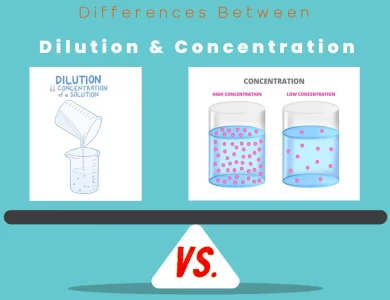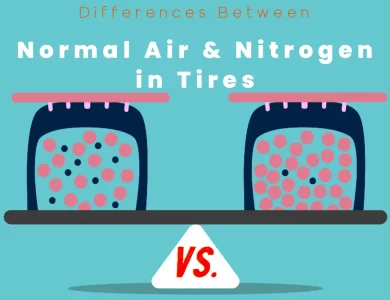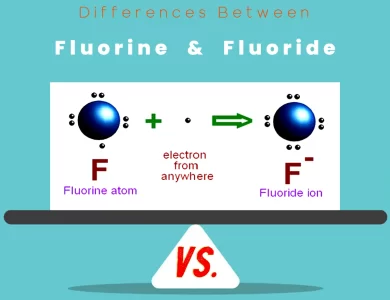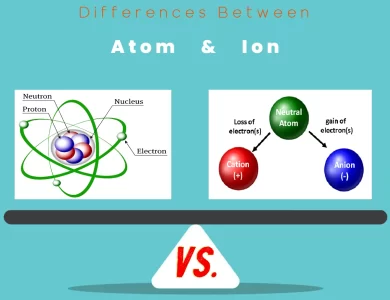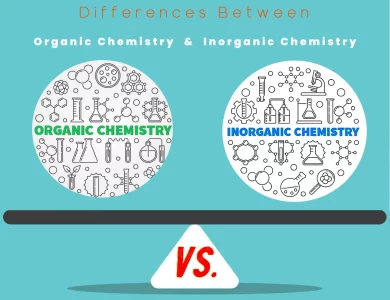
| Property | Liquid State | Gaseous State |
|---|---|---|
| Molecular Arrangement | Closely packed, with some mobility. | Far apart, high kinetic energy. |
| Definite Volume | Yes | No |
| Definite Shape | No | No |
| Density | Higher | Lower |
| Compressibility | Lower | Higher |
| Fluidity | High | High |
| Viscosity | Variable, often higher | Very low |
| Pressure Effects | Minimal | Significant |
| Temperature Effects | Modest | Significant |
| Change to Gas | Vaporization (boiling) | Vaporization (boiling) or sublimation |
| Change to Liquid | Condensation | Condensation |
| Change to Solid | Freezing | N/A (sublimation possible) |
| Environmental Impact | Both positive (e.g., water) and negative (e.g., oil spills) environmental effects. | Both positive (e.g., oxygen) and negative (e.g., greenhouse gases) environmental effects. |
| Phase Diagram Representation | Region between solid and gas phases. | Absence of a distinct liquid phase. |
| Sublimation | Not applicable | The transition from solid to gas without passing through the liquid phase. |
| Scientific Research and Applications | Essential for chemical reactions, biological studies, and material science. | Used in analytical chemistry, space exploration, and advanced technologies. |
| Safety Considerations | Requires proper chemical storage and handling procedures. | Requires strict gas cylinder safety and ventilation systems. |
Picture this: you’re sipping your favorite beverage on a sunny day, and the ice cubes in your glass are slowly melting, transforming from a solid to a liquid. Meanwhile, the air around you, filled with invisible gases, feels light and breezy. Have you ever wondered why these substances behave the way they do? What causes liquids to flow while gases expand to fill their containers?
Differences Between Liquid State and Gaseous State
The main differences between the liquid state and the gaseous state lie in their molecular arrangement and physical properties. In the liquid state, molecules are closely packed with some mobility, maintaining a definite volume but lacking a definite shape. Liquids have higher density and lower compressibility compared to gases. On the other hand, in the gaseous state, molecules are far apart with high kinetic energy, resulting in no definite volume or shape. Gases have lower density and higher compressibility. Understanding these key distinctions is essential in various scientific, industrial, and environmental contexts.
1. Molecular Arrangement
Liquid State:
In the liquid state, molecules are closely packed together, yet they have a degree of freedom to move past one another. This arrangement allows liquids to maintain a definite volume, as the attractive forces between molecules prevent them from spreading out indefinitely. However, the lack of a fixed arrangement means that liquids do not have a definite shape and will conform to the shape of their container.
One of the defining features of liquids is their ability to flow. The particles in liquids move in a random fashion, constantly sliding past each other while staying within a certain range. This mobility is due to the relatively weak intermolecular forces compared to solids.
Gaseous State:
Gases, on the other hand, have a vastly different molecular arrangement. In the gaseous state, molecules are much farther apart and have significantly higher kinetic energy compared to liquids. This results in gases having neither a definite volume nor a definite shape. They take the shape and volume of their container, filling it completely.
The molecules in gases move freely and rapidly, colliding with each other and the container walls. These collisions are responsible for the pressure exerted by gases. In the absence of external constraints, gases will expand to fill the available space.
| Property | Liquid State | Gaseous State |
|---|---|---|
| Molecular Arrangement | Closely packed, with some mobility. | Far apart, high kinetic energy. |
| Definite Volume | Yes | No |
| Definite Shape | No | No |
2. Density and Compressibility
Liquid State:
Liquids are generally denser than gases. This is because the molecules in a liquid are closer together, resulting in a higher mass per unit volume. The density of a liquid is relatively constant, as the intermolecular forces prevent the molecules from compressing further. However, the density of a liquid can vary with temperature and pressure, albeit to a lesser extent than gases.
Gaseous State:
Gases are much less dense than liquids due to the greater separation between molecules. They have a lower mass per unit volume, which makes them highly compressible. Gases can be easily compressed into smaller volumes by increasing the pressure or reducing the temperature, causing the molecules to come closer together.
| Property | Liquid State | Gaseous State |
|---|---|---|
| Density | Higher | Lower |
| Compressibility | Lower | Higher |
3. Volume and Shape
Liquid State:
Liquids have a definite volume, meaning they occupy a fixed amount of space. However, they do not have a definite shape and take on the shape of the container they are placed in. This property makes liquids ideal for applications where you need a substance to conform to the shape of a vessel, such as storing beverages in a bottle.
Gaseous State:
Gases have neither a definite volume nor a definite shape. They completely fill the available space in their container, assuming both its shape and volume. This characteristic is why gases are often used to inflate balloons, as they can expand to fit the balloon’s shape.
| Property | Liquid State | Gaseous State |
|---|---|---|
| Definite Volume | Yes | No |
| Definite Shape | No | No |
4. Fluidity and Viscosity
Liquid State:
Liquids exhibit a high degree of fluidity. This means that they can flow and pour easily. The flow of liquids is influenced by their viscosity, which is a measure of their resistance to flow. Viscosity depends on factors like temperature and the nature of the liquid’s molecules. For example, honey has a higher viscosity than water due to its thicker molecular structure.
Gaseous State:
Gases are highly fluid and exhibit rapid random motion of molecules. They have very low viscosity, which means they flow easily and quickly. Unlike liquids, gases do not possess a measurable viscosity because the molecules are so far apart and move freely.
| Property | Liquid State | Gaseous State |
|---|---|---|
| Fluidity | High | High |
| Viscosity | Variable, often higher | Very low |
5. Pressure and Temperature Effects
Liquid State:
Pressure has a minimal effect on the volume of a liquid. Liquids are nearly incompressible, meaning that applying pressure to a liquid does not significantly reduce its volume. However, changes in temperature can affect the density and viscosity of a liquid. For instance, as a liquid is heated, its density typically decreases, causing it to expand slightly.
Gaseous State:
Pressure has a significant impact on gases. Gases are highly compressible, and increasing the pressure can drastically reduce their volume. Conversely, decreasing the pressure allows gases to expand. The behavior of gases with changing temperature is described by Charles’s law and the ideal gas law. As temperature increases, gases expand, and as temperature decreases, gases contract.
| Property | Liquid State | Gaseous State |
|---|---|---|
| Pressure Effects | Minimal | Significant |
| Temperature Effects | Modest | Significant |
6. Changes in State
Liquid State:
To change a substance from a liquid to a gas (vaporization), you need to supply heat energy to overcome the intermolecular forces that hold the liquid together. This process occurs at the substance’s boiling point. Conversely, to change a liquid into a solid (freezing), you need to remove heat energy, causing the molecules to slow down and arrange themselves into a more ordered structure.
Gaseous State:
Gases can be condensed into liquids by cooling them down and removing heat energy (condensation). Conversely, turning a solid or liquid into a gas requires adding heat energy (vaporization). The transition from solid to gas without passing through the liquid state is known as sublimation. An example of sublimation is the transition of dry ice (solid carbon dioxide) directly into carbon dioxide gas.
| Property | Liquid State | Gaseous State |
|---|---|---|
| Change to Gas | Vaporization (boiling) | Vaporization (boiling) or sublimation |
| Change to Liquid | Condensation | Condensation |
| Change to Solid | Freezing | N/A (sublimation possible) |
7. Real-world Applications
Liquid State:
Liquids play a crucial role in our everyday lives and various industries. Some notable applications include:
1. Beverage Industry
Liquids are the foundation of beverages, from water and juice to soft drinks and alcoholic beverages. Their fluidity and ability to take on flavors make them the perfect medium for delivering taste.
2. Pharmaceutical Manufacturing
Pharmaceuticals are often synthesized and formulated in liquid form for easy administration and absorption by the body.
3. Hydraulic Systems
Liquids, such as hydraulic fluids, are used to transmit power in various machinery and industrial equipment due to their incompressibility.
4. Lubrication
Liquids are used as lubricants to reduce friction and wear in engines, gears, and bearings.
Gaseous State:
Gases also have a wide range of practical applications across industries:
1. Energy Production
Gases like natural gas and hydrogen are used as fuels in power plants to generate electricity.
2. Refrigeration and Air Conditioning
Refrigerant gases are used in cooling systems to maintain low temperatures in refrigerators, air conditioners, and freezers.
3. Medical Gas
Medical gases, such as oxygen and nitrogen, are essential for patient care in hospitals and clinics.
4. Industrial Processes
Gases are utilized in chemical reactions, welding, and metallurgy, among other industrial processes.
8. Environmental Impact
Liquid State:
Liquids can have a significant environmental impact, both positive and negative. For example:
1. Water as a Solvent
Water, in its liquid state, serves as a universal solvent and is essential for life on Earth. It plays a crucial role in ecosystems, sustaining plant and animal life. However, pollution and contamination of water can have severe ecological consequences.
2. Oil Spills
Liquid hydrocarbons, such as crude oil, are liquids that can cause devastating environmental damage when spilled into water bodies. These spills harm aquatic life and disrupt ecosystems.
3. Liquid Waste Management
Proper disposal and treatment of liquid waste are essential to prevent contamination of groundwater and surface water sources, which can have long-term environmental repercussions.
Gaseous State:
Gases also have environmental implications, particularly in the context of greenhouse gases and air quality:
1. Greenhouse Gases
Certain gases, such as carbon dioxide (CO2) and methane (CH4), in the gaseous state contribute to the greenhouse effect, trapping heat in the Earth’s atmosphere and causing global warming.
2. Air Pollution
Gaseous pollutants, including nitrogen oxides (NOx) and sulfur dioxide (SO2), are released into the atmosphere from various industrial and transportation sources, contributing to air pollution and its associated health and environmental impacts.
3. Gas Emissions
Efforts to reduce harmful gas emissions, such as those from automobiles and industrial processes, are critical for mitigating air pollution and minimizing its effects on human health and the environment.
9. State Transitions and Phase Diagrams
Liquid State:
Liquids can undergo phase transitions when subjected to changes in temperature and pressure. Phase diagrams are graphical representations that show the conditions under which a substance exists in various states. In a typical phase diagram for a substance, the liquid phase is represented by a region between the solid and gas phases.
Triple Point
The triple point is a unique state at which a substance can coexist in all three phases (solid, liquid, and gas) simultaneously. It occurs at a specific combination of temperature and pressure for each substance.
Gaseous State:
Gases also exhibit phase transitions, but their phase diagrams are characterized by the absence of a distinct liquid phase. Instead, the boundary between the gas and solid phases is direct, and gases sublimate directly into solids under certain conditions.
Sublimation
Sublimation is the transition of a substance directly from the solid phase to the gas phase without passing through the liquid phase. Dry ice (solid carbon dioxide) is a common example of a substance that undergoes sublimation.
10. Scientific Research and Applications
Liquid State:
Liquid-state chemistry and physics play a vital role in scientific research and various applications:
1. Chemical Reactions
Many chemical reactions occur in the liquid state, where reactant molecules can collide and interact. Liquid-state reactions are often employed in laboratories and industrial processes.
2. Biological Studies
Liquids are essential for studying biological systems, from cellular processes in living organisms to the synthesis of pharmaceuticals and the development of biotechnology.
3. Material Science
Researchers study the properties of liquids to develop new materials with specific characteristics, such as polymers and alloys.
Gaseous State:
Gases also have critical applications in scientific research and technology:
1. Analytical Chemistry
Gases are used in various analytical techniques, such as gas chromatography and mass spectrometry, to identify and quantify substances in complex mixtures.
2. Space Exploration
In space exploration, gases like rocket propellants are used to propel spacecraft into orbit and beyond, making space missions possible.
3. Advanced Technologies
Gases are used in semiconductor manufacturing, laser technology, and nanotechnology, driving innovation in a wide range of industries.
11. Safety Considerations
Liquid State:
Handling liquids, especially hazardous ones, requires careful consideration of safety measures:
1. Chemical Storage
Proper storage of liquid chemicals is essential to prevent leaks, spills, and environmental contamination.
2. Handling Procedures
Safe handling practices, including the use of personal protective equipment (PPE), are critical to minimize the risk of accidents and exposure to harmful liquids.
Gaseous State:
Handling gases comes with its own set of safety challenges:
1. Gas Cylinder Safety
Gas cylinders, often used in laboratories and industrial settings, must be stored, transported, and used in accordance with strict safety guidelines to prevent leaks and accidents.
2. Ventilation
Proper ventilation systems are necessary in areas where gases are used or produced to prevent the accumulation of potentially hazardous concentrations.
Conclusion
The comparison between the liquid state and the gaseous state reveals the rich diversity of matter’s behavior under different conditions. While liquids are known for their definite volume, lack of a definite shape, and high fluidity, gases exhibit the absence of both definite volume and shape, along with high fluidity and low viscosity. These differences have profound implications in various fields, from environmental science to industry, and from research laboratories to everyday life. Understanding the unique characteristics of liquids and gases allows us to harness their potential while being mindful of their impact on our environment and safety.
FAQs
The fundamental difference lies in the molecular arrangement. In the liquid state, molecules are closely packed with some mobility, while in the gaseous state, molecules are far apart with high kinetic energy. Liquids have a definite volume but no definite shape, whereas gases have neither a definite volume nor a definite shape.
Density is higher in liquids due to the closer arrangement of molecules, while gases have lower density because their molecules are more spread out. Liquids are less compressible, whereas gases are highly compressible.
Liquids exhibit high fluidity and have variable viscosity, meaning they flow easily but can vary in resistance to flow. Gases, on the other hand, have both high fluidity and very low viscosity, allowing them to flow rapidly.
Pressure has minimal effects on the volume of liquids, but it significantly impacts gases, making them highly compressible. Changes in temperature moderately affect liquids but have significant effects on gases, following gas laws like Charles’s law and the ideal gas law.
Yes, both can change states. Liquids can change into gases through vaporization (boiling) and into solids through freezing. Gases can change into liquids through condensation and into solids through sublimation, bypassing the liquid state.
Liquids find applications in the beverage industry, pharmaceutical manufacturing, hydraulic systems, and lubrication. Gases are used in energy production, refrigeration, medical applications, and various industrial processes.
Yes, both have environmental impacts. Liquids, like water, have positive environmental effects but can also be a source of pollution (e.g., oil spills). Gases, such as greenhouse gases, can contribute to global warming, while others are pollutants affecting air quality.
Phase diagrams represent the conditions under which substances exist in different states. Liquids have a distinct liquid phase, while gases directly sublimate into solids under certain conditions.
Liquids are essential for chemical reactions, biological studies, and material science. Gases are used in analytical chemistry, space exploration, and advanced technologies.
Yes, handling liquids and gases requires safety measures. Liquids need proper storage and handling to prevent spills, while gases need adherence to safety guidelines for gas cylinders and ventilation systems.
Read More:
Contents
- Differences Between Liquid State and Gaseous State
- 1. Molecular Arrangement
- 2. Density and Compressibility
- 3. Volume and Shape
- 4. Fluidity and Viscosity
- 5. Pressure and Temperature Effects
- 6. Changes in State
- 7. Real-world Applications
- 8. Environmental Impact
- 9. State Transitions and Phase Diagrams
- Gaseous State:
- 10. Scientific Research and Applications
- 11. Safety Considerations
- Conclusion
- FAQs
